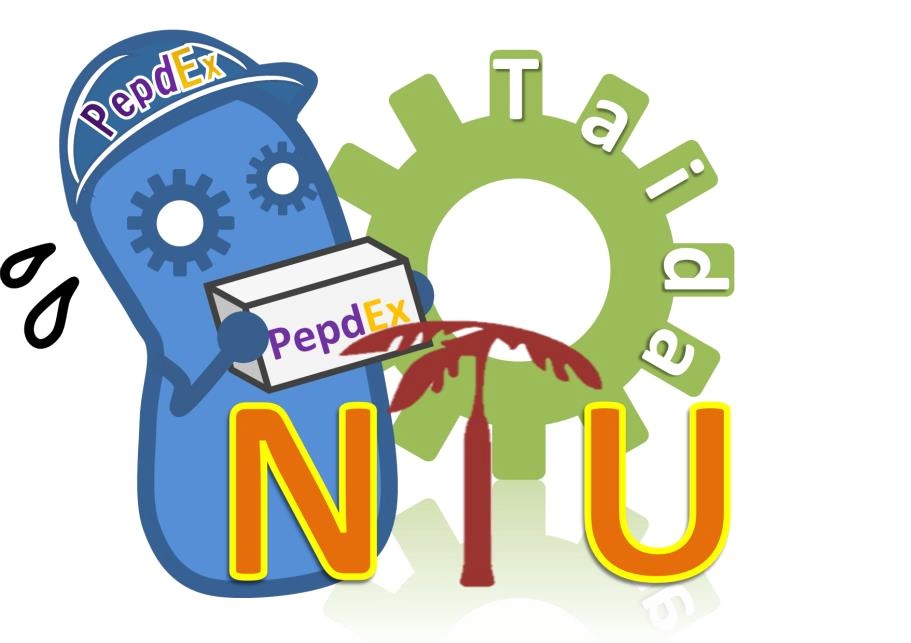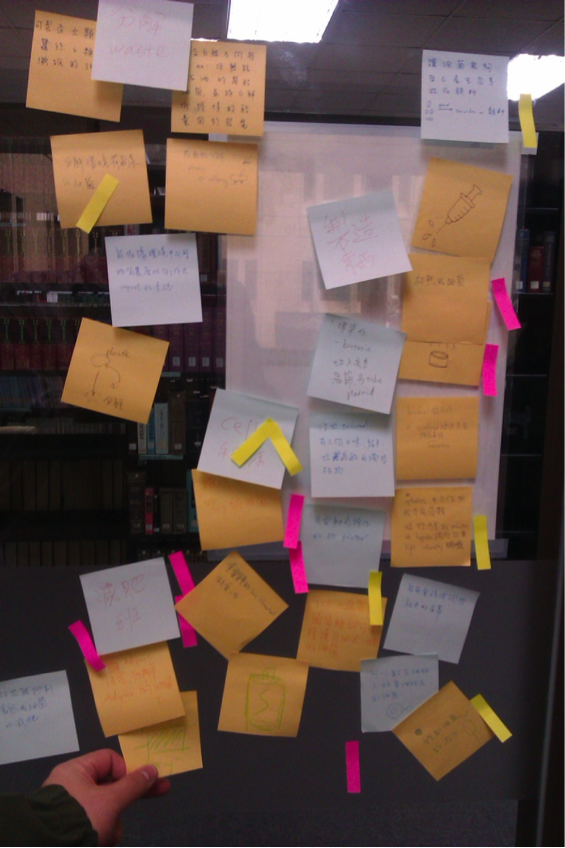Team:NTU-Taida/Human Practice/Design
From 2012.igem.org
Design Thinking Workshop

Contents |
Empathy
This step is to interview the patients and some physicians as we did in the part 1 section. Before we did the interview, we try to break our projects and purposes in a more direct way for people to catch our ideas. A good interview experience makes us know better of what we are going to create, and the room we are going to break.
The core idea of empathy is to ask to observe, to get immersed in the scenarios. By doing that, we walked into the hospital, approached the patients. The interview was basically started with a brief introduction of ourselves, and then we tried to ask them what the biggest unpleasantness they happened to face during the admission, and what they thought of what we can improve. The interview consequences are recorded if possible, and we certainly took notes and used as many figures, sketches as possible.
The patients we are trying to approach can be generally divided into two parts, first, random patient in the hospital, and second, patients from department of neurology and department of rheumatology. As human-centered designer, we try our best to understand our patients more. We firmly believe the more we know about our customers, the closer our projects can be applied into actuality, and uncover the unknown needs of them.
Define
In the part of define, the main idea is sought to summarize the interview results, and try to refine the interviewing results. For instance, patient may say, I felt bad since many neurological diseases requiring repetitive admissions are hereditary, and the progression of diseases is usually unstoppable. Those patients had to take several shots (medical injections) every other time, and increased the admission. On the other case, the patients complained of adverse effects resulted from the long-term medications. We can summarize their needs by saying- they need more positive, long-term, sustainable treatments. Further, based on the interviews, we tried to ask “what”, “why”, and “how” as we tried to gain the insights of their needs. For example, during the interview, patients kept complaining of the slow and tedious authorities, and small spaces of the wards. We gained the insights that time and comfort were the main concerns of our patients. After summarizing the interview into “needs” and “insights”, we now established a database of our own. And based on this we can further ideate and create the solutions.
Research
As a medicine-based iGEM team, we tried to condense our projects into different branches: neuroscience, and immunology. As based our survey and pearl experience from the doctors, many results in these fields remained unclear and required more studies and novelties to breakthrough. We come out of three separate projects in the beginning: metabolic modulation peptide, anti-cancer peptide, and neuro-degenerative peptide. From then, we broke into different teams to do some surveys of these fields, and collected as many possible solutions as possible.
Ideation
After a series of studies and researches in about one week, we came back to collect what we had got in our researches, reframe the knowledge, and fabricate our various thoughts to gain a distinguished perspective. During this session, we use the step as follows. (modified from http://dschool.stanford.edu/dgift/)
1. Rephrase and reframe what we found in the research; try to use figures and graphs to convey your thoughts.
2. Brainstorm by connecting different possible solution together; play the game called “Yes, and”. Try to control different sessions within a certain period of time.
3. Wrap up the project by recapping our solutions. Try to summarize different tracks into one.
For example, we rephrased and reframed the needs as: the patients need long-term, sustainable treatments for different chronic diseases. With the rapid advancement in neuroscience and immunology, we are able to develop more and more possible therapeutic peptide-based drugs, some of them are innate in human body. During the ideation we generated a series of solutions, from spawning new drug delivery system to modify the triages and general efficiency of hospital to perfection. The essence of ideate is not to defy any possibility and to expand our project as further as possible.
Prototyping
In the prototyping, as we tried to actualize our projects. We had to define and optimize our thoughts from ideation. Since we finalized our goal as: to provide a new platform for the drug delivery. We came out of the name of the project-PepDEX, namely, the delivery of peptides. As this proposal was considered flexible, and could be applied to different diseases in the future. In addition, the bacteria in the gut have been proposed to have an great impact on the brain, and it can also provide a potential pathway for the vaccine delivery as described in our project design.
 "
"



